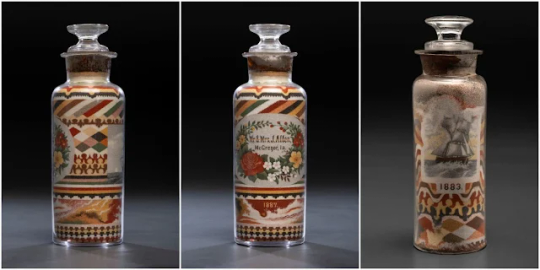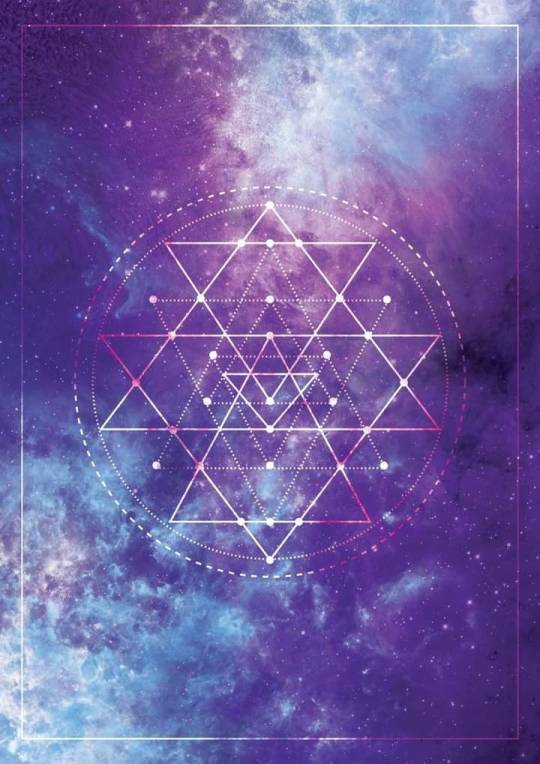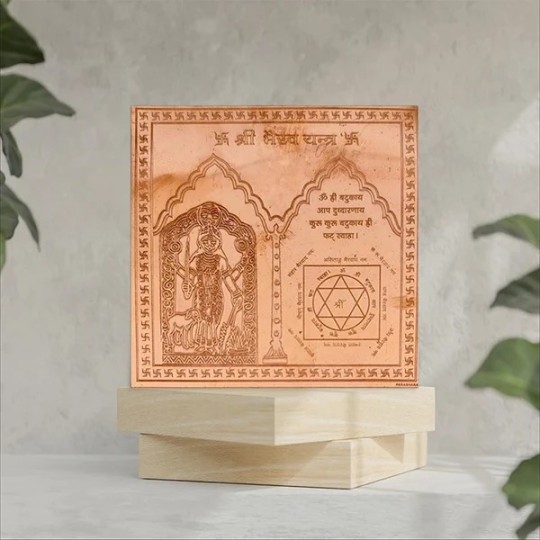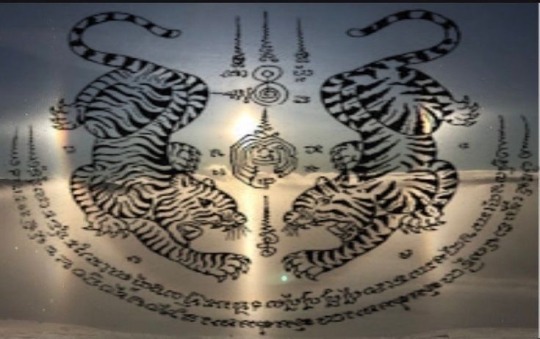#yantra
Explore tagged Tumblr posts
Text

Detail of a Dharani Sutra Quilt for covering the deceased in China.
31 notes
·
View notes
Text

Veliko Tarnovo // Bulgaria // Balkan
9 notes
·
View notes
Text

ॐ दुं दुर्गायै नम
Om Dum Durgaye Namah
Protection & Success Altar targeted toward a certain individual we all empathize with atm
#luigi mangione#yantra#mantra chanting#goddess durga#chaos magick#metawixen#digital altar#charged#reblog to add your energy
9 notes
·
View notes
Text
The Mystique of Yantras.

For eons, humans have been decoding to create cosmic connections through signs and symbols, mystical and fascinating across cultures and centuries.

So much to learn 😘 Humble Attempts
Love
DeeSignia 🐾
#yantra#signs#symbols#art journal#learning#learning journey#handwritten#hand drawn#journal#journaling
6 notes
·
View notes
Text

Siddhachakra
The Ṇamōkāra mantra
Ṇamō Arihantāṇaṁ Ṇamō Siddhāṇaṁ Ṇamō Ayariyāṇaṁ Ṇamō Uvajjhāyāṇaṁ Ṇamō Lōē Savva Sāhūṇaṁ Ēsō pan̄ca ṇamōkkārō, savva pāvappaṇāsaṇō Maṅgalā ṇaṁ ca savvēsiṁ, paḍamama havaī maṅgalaṁ
I bow to the Arihants. I bow to the Siddhas. I bow to the Acharyas. I bow to the Upadhyayas. I bow to all of the Sages of the world. This five-fold salutation completely destroys all the sins. Of all auspicious mantras, (it) is indeed the foremost auspicious one.
12 notes
·
View notes
Text

Esta é a edição de testes do nosso futuro pequeno-grande livro sobre YANTRIX.
A versão completa terá todo o nível inicial para criar com o sistema, o ensaio filosófico sobre a técnica, além de uma coleção de diagramas herméticos com comentários e reflexões.
O livro digital deve ser lançado em novembro de 2024.
O livro físico está previsto para o 2° semestre de 2026.
9 notes
·
View notes
Text



Sand bottle art by Andrew Clemens, 1880s
#sand art#sand bottle art#andrew clements#art history#art#colored sand#smithsonian#sand painting#commission art#sand sculpture#19 century#sand castle#sandy#sand festival#sand angles#sand mandala#process art#sand animation#yantra#bonkei#Kolam#rangoli#marmotinto
9 notes
·
View notes
Text
zinrs #31
youtube
Venturama Yantrix, Proporção Áurea, Sólidos Platônicos
4 notes
·
View notes
Text
The seeds of Vandana Shiva
18 notes
·
View notes
Text

18 notes
·
View notes
Text

Veliko Tarnovo // Bulgaria
#veliko tarnovo#balkan#bulgara realty#bulgaria#bg#trip#travel#varna#yantra#old town#streets#old architecture
8 notes
·
View notes
Text
Shri Bhairav Yantra

Bhairav contains the Hindi Word “Bhaya”, which means fear, and the Bhairav is the one who terminates the fear. It also implies Brahma, Vishnu & Mahesh. Shri Bhairav Yantra is a sublime medium to invoke the blessings of Bhairav Nath. It is the best protector against the evil eye, black magic, spirits, and ghosts. Shri Bhairav Yantra copper was made to remove the evil eye and black magic.
10 notes
·
View notes
Text

Sri Yantra (Sanskrit यन्त्र) or Sri Chakra, literally, "machine, instrument, engine, motor, implement, fetter, implement for holding, mystical diagram supposed to possess occult powers, trace, prop, appliance, band, apparatus, surgical instrument, any instrument for holding or restraining or fastening, restraint, tie, device, any instrument or apparatus, support, force, mechanical contrivance, barrier, means, amulet, rein."
Sri Yantra is a representation of one aspect of the Universe, it comes from the Sanskrit words 'Yam' and 'Trana' and essentially means liberation from birth to rebirth.
The Sri Yantra, also known as the Sri Chakra, is a mystical diagram used in the Sri Vidya school of Hinduism. Out of hundreds of Yantras related to principles, deities and planets, the Sri Yantra is said to be one of the most auspicious and powerful of all. It’s called the ‘Queen of Yantras’ because all other Yantras were derived from it. It’s also widely used in Hindu ceremonies and meditation practices.
Sri Yantra, is the yogic equivalent of the Buddhist Mandala. In Buddhism, (Tibetan: Trulkhor, which also means "movement of body"). Particular exercises taught by Padmasambhava to harness Prana (energy) and achieve profound relaxation in preparation for meditation.
In Hinduism the Yantra is generally used to referred to a mystical diagram like a mandala, utilized for meditation. In Hindu and Buddhist traditions, a Yantra is a geometric diagram, or a symbolic representation of aspects of divinity.
In the realm of myth and legend, it’s said to be the tool that Goddess Lalita used to recreate the universe after its destruction. So, while its antiquity isn’t in doubt, what we don’t really know is exactly when and how it became a central figure in meditation and sacred rituals.
Within the inner lotus is the first set of interlocked triangles. A fundamental meaning of the Sri Yantra meaning is the union of the divine masculine and feminine. This is symbolized by the nine interlaced upward and downward pointing triangles. The interlocking of the triangles is symbolic of the opposite principles complementing each other, and the general balance and symmetry of the entire figure represent the unity of god.
The central triangle is the giver of all perfection. In the middle of the central triangle is a Bindu, or the central dot. It’s the ultimate destination of this spiritual journey. It represents pure consciousness, the source of all creation, and the ultimate truth of existence. The journey to this point signifies the merging of the individual self into the supreme self, the final aim of many spiritual traditions.
Yantra is an instrument of fastening and also a magic diagram. It is derived from the verbal root Yam, ‘to control.'
Because it restrains all suffering arising from the defects (in the form) of desire, anger and so forth they call it Yantra. The god who is worshipped in it graces (the practitioner).
The Sri Yantra or Sri Chakra is an important cult object for the Sri Vidya tradition of tantrism. It is understood as being the subtle form of the goddess Sri Lalita.
A new Sri Chakra is always carefully drawn whenever a Puja is performed. The Pujas that are done in this tradition are always performed privately, except for the Puja done in select temples.
The Sri Yantra is composed of two sets of triangles. One set includes four male triangles denoting the four aspects of evolved or limited consciousness. The other set includes five female triangles denoting the five vital functions, the five senses of knowledge, the five senses of action, and the five subtle and five physical forms of matter.
These two sets of triangles are superimposed to show the union of the masculine and feminine aspects of your nature. When united they make the eight lotus petals of the Yantra. Four gates or doors called Bhupura, surround these triangles representing the gates of the consciousness to the deeper mysteries beyond.
These nine triangles are of various sizes and intersect with one another. In the middle is the power point (Bindu), visualizing the highest, the invisible, elusive center from which the entire figure and the cosmos expands. The triangles are enclosed by two rows of (8 and 16) petals, representing the lotus of creation and reproductive vital force. The broken lines of the outer frame denote the figure to be a sanctuary with four openings to the regions of the universe.
When the Goddess is invited to take her place, before the moment of worship, the yoni mudra is made since the yoni, the female organ is her Pitha or Yantra. The yoni can never be regarded by a Tantric adept otherwise than an altar.
"A Yantra symbolically represents the human body and psyche. Most are circles enclosed in a square outer form with four gates. The square represents the ego consciousness, while the circle represents the unconscious. Whenever something unconscious becomes conscious, it is symbolized by a circle or a round shape, becoming a square or a cube. The square outer layer of a Yantra represents the act of entering the circle, or the unconscious entering the consciousness."
― Heinrich Zimmer - Philosophies of India
Sri Yantra represents visually the replication of the “genetic code” of the first triangle in the process of creation of the multiform universe in all its complexity.
The expansion of space, time, sound and energy continue in the process of creation, and the primary triangle is transformed into a series of lines, triangles, circles and squares to form the Sri Yantra. The various patterns are the modifications of the original primal vibration, which at each stage contains interplay of the static and kinetic energies in varying degrees of concentration. The Sri Yantra is called “Nava Chakra”, since it is composed of nine circuits, counting from the outer plane to the Bindu. Through contemplation on the Sri Yantra, the adept can rediscover his primordial source.
In Buddhist tantra this Yantra appears as a six-pointed chakra, which may be depicted at the center of certain mandalas or form the lower seats of deities such as Vajravarahi, Simhamukha, and certain forms of Mahakala. In Hindu tantra the Yantra formed from the intersection of these triangles is also known as a chakra, the most famous being the Sri-chakra of the goddess Tripura Sundari or Sri. Mahākala derives from Maha great + Kala time, great time; a name of Siva as the destroyer, and of Vishnu as the preserver.
The six-pointed chakra, formed by two intersecting triangles, is one of the prime symbols of Hindu tantra. It represents the union of the goddess as the downwards-pointing female pubic triangle, with the upward-pointing male triangle of the god, formed by the testicles and erect penis.
The Shri Yantra is composed of five downward-pointing Shakti triangles and four upward-pointing Shiva triangles, creating a perfect pattern of forty-three interlocking triangles.
Yantra (or chakra) is a geometrical “design filled up with mantra (syllables)” with mystic significance for every part of it. The deity is believed to reside in the Yantra. A Yantra is made of geometric images or drawings of triangles, and hexagons and colors with mantras written in them. Common colors such as white, red and black are used therein, representing the qualities Sattva, Rajas and Tamas.
Together the nine triangles are interlaced in such a way as to form 43 smaller triangles in a web symbolic of the entire cosmos or a womb symbolic of creation. Together they express Advaita or non-duality. This is surrounded by a lotus of eight petals, a lotus of sixteen petals, and an earth square resembling a temple with four doors.
Mantra and Yantra work in unison. During worship, mantras are recited invoking deities of the Yantras. The latter is the visual representation of deity while the former is the sonic form of the Yantra. The divine force of a Yantra is derived from the sacred power of the mantra from which it is born. It is a physical manifestation of a mantra.
Yantras are used for the worship of deities in temples or at home; as an aid in meditation; and for the benefits believed given by their occult powers based on Hindu astrology and tantric texts. Such diagrams are intended to channel psychic forces through concentrated visualization.
These two sets of triangles are superimposed to show the union of the masculine and feminine aspects of your nature. When united they make the eight lotus petals of the Yantra. Four gates or doors called Bhupura, surround these triangles representing the gates of the consciousness to the deeper mysteries beyond. By regularly meditating on a specific Yantra, you can tune in to the corresponding archetype to focus its healing energies in your psyche and foster personal growth.
These nine triangles are of various sizes and intersect with one another. In the middle is the power point (Bindu), visualizing the highest, the invisible, elusive center from which the entire figure and the cosmos expand. The triangles are enclosed by two rows of (8 and 16) petals, representing the lotus of creation and reproductive vital force. The broken lines of the outer frame denote the figure to be a sanctuary with four openings to the regions of the universe.
The expansion of space, time, sound and energy continue in the process of creation, and the primary triangle is transformed into a series of lines, triangles, circles and squares to form the Sri Yantra. The various patterns are the modifications of the original primal vibration, which at each stage contains interplay of the static and kinetic energies in varying degrees of concentration. The Sri Yantra is called “Nava Chakra”, since it is composed of nine circuits, counting from the outer plane to the Bindu. Through contemplation on the Sri Yantra, the adept can rediscover his primordial source.
"The Sri Yantra is composed of two sets of triangles. One set includes four male triangles denoting the four aspects of evolved or limited consciousness. The other set includes five female triangles denoting the five vital functions, the five senses of knowledge, the five senses of action, and the five subtle and five physical forms of matter."
― The Encyclopedia of Hinduism
Image: Sri chakra or Sri Yantra with correct traditional colors in a silkscreen print made in 1974 at the Tantra Research Institute in Oakland, California.
#sriyantra #srichakra #navachakra
3 notes
·
View notes
Text
A yantra is the yogic equivalent of the Buddhist mandala...

3 notes
·
View notes
